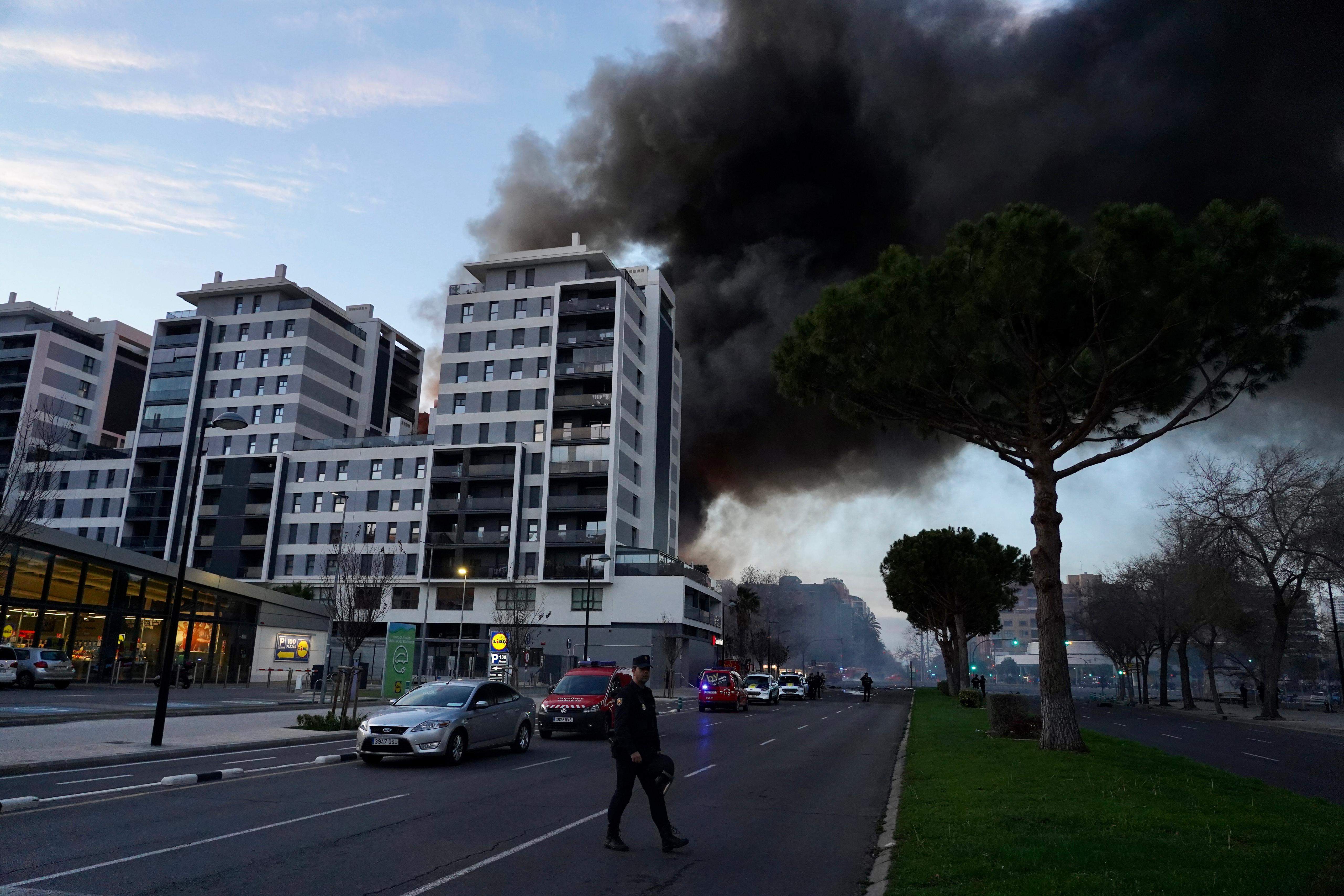A sudden and devastating fire in a fourteen-storey residential complex in València, which has caused nine deaths and left over 100 families without a place to live. It did not take long before several experts asserted that the construction material used in the building's facades could have been one of the main reasons for the rapid spread of the flames.
A common material in many buildings in the neighbourhood
The rapid spread of the fire in the building could be explained by the polyurethane foam built into its cladding. According to the vice-president of the College of Industrial Technical Engineers of Valencia, Esther Puchades, the building was covered with this flammable material. In fact, it was similar to that used in the cladding of London's Grenfell Tower hi-rise, which burnt down in 2017 with a loss of 72 lives. "This is what caused the building to burn down in less than half an hour", said Puchades in statements to the television channel À Punt.
Esther Puchades knows the specific case of this building very well, as she was the engineering expert consulted during its construction. As she explained, behind the aluminium finish of the panels on the exterior of the building was a polyurethane foam filling, a material common to many of the buildings in the neighbourhood. The tragedy in the British building, already seven years ago, prompted reviews and changes in building regulations, and the start of a process of re-cladding for hundreds of affected buildings. She says that the fire in this building with a ventilated facade and polyurethane cladding will create "a before and an after" in Spain, where no similar disaster had occurred until now, despite the fires in hi-rise buildings in London and China. According to Puchades, the use of polyurethane is not prohibited in construction, but given the virulence of this fire, its use could be reconsidered.
"Modern facilities"
In a promotional video by Fbex, the construction developer, the apartment block in Avinguda Mestre Rodrigo is presented as an "avant-garde and unique" complex, with "facades covered with an innovative aluminum material such as Alucobond" and the "highest quality in construction materials with modern facilities, finishes and equipment". Alucobond is the trademark for this type of cladding, known in Spain as aluminum sandwich panels, and consisting of panels with an outer aluminum cover and an inner polymer filling. Depending on the quality and cost of this material, it may or may not incorporate a fire retardant layer.
If it had been built with brick "it wouldn't have spread"
Antonio Hospitaler, a civil engineering professor at the Polytechnic University of Valencia, asserts that the spread of the fire across the height and breadth of the facade is "much faster than a fire in the open air" and that, if this had been built with brick and not with a combustible material, "it would not have spread". Hospitaler has specified that since 2006, Spain's Technical Building Code, with modifications that have been made, "provides for this type of situation and that the materials on the facade are not combustible, to avoid the spread of fires". "The facade has a physical property which makes flames stick to it and when they do, they rise up at full speed. The fire then spreads quickly. This caused the glass in the apartments to break and enable the fire to spread inside the homes", he emphasized. As well, technical engineer and expert in building installations, David Higuera, told El País that the rapid "horizontal" expansion of the fire caught his attention, which, as he explains, puts in evidence that there were also synthetic floors. In short, there were "extremely combustible" materials everywhere, he says, "which in my opinion should be completely banished from buildings."
Architects and builders call for caution over conclusions
The Spanish General Council of Technical Architecture (CGATE) has demanded "caution when expressing unfounded opinions" about the València fire until the results of the investigations that clarify the composition of the construction system and the causes of the accident." Voices in the building sector have also defended polyurethane foam, specifically the Rigid Polyurethane Industry Association (IPUR) and the Insulation Installers Association (AISLA). AISLA rejects "the attacks that have been made in the last few hours" against the material and claims that the building destroyed by the fire did not have insulation from this product in the ventilated facade, and that the accusations saying that it was a "fire spreading agent" were "false". Spain's National Association of Manufacturers of Insulating Materials (ANDIMAT) also urged caution when mentioning materials, products and systems used in the construction of the building, pending official reports. "There is no evidence that polyurethane was part of the facade," said the body.

